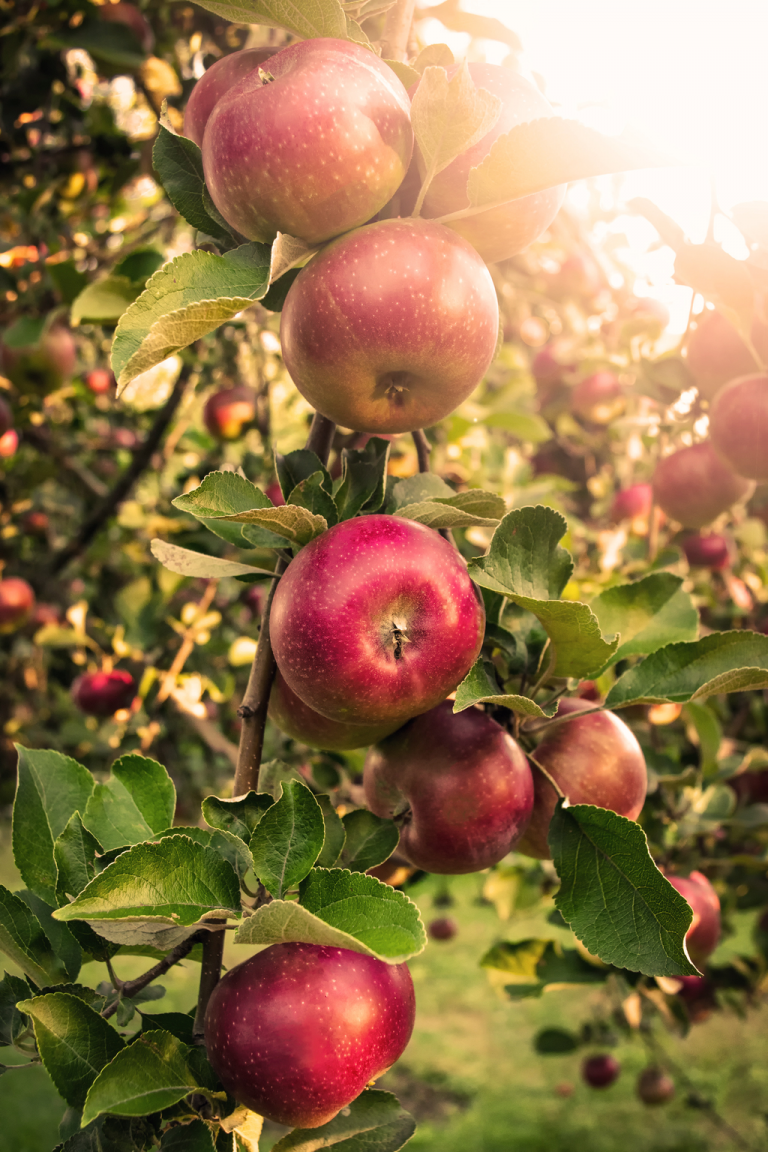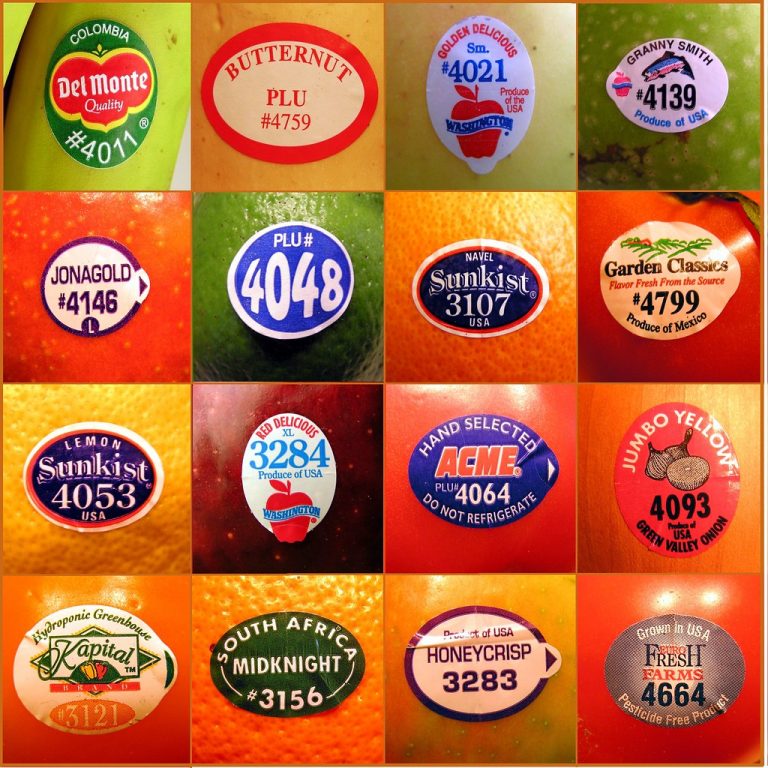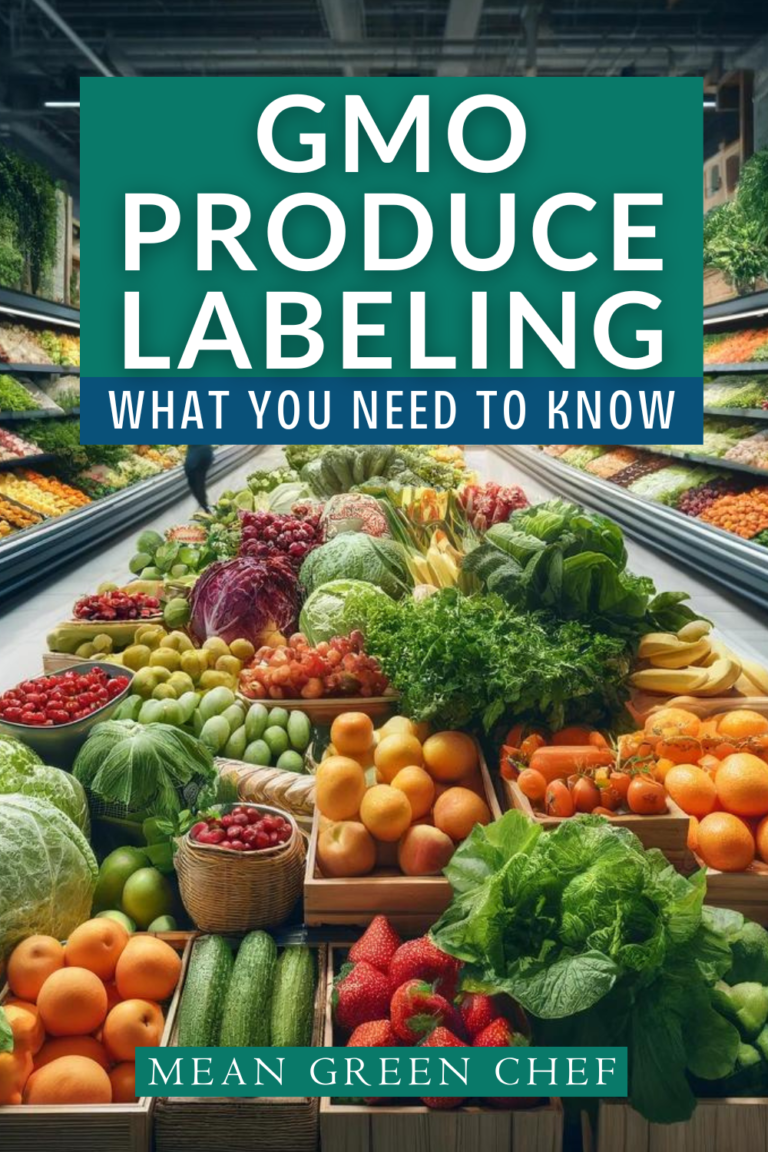GMO Produce labeling and what you need to know. While Congress did pass a bioengineered food disclosure, staying informed along the way makes for easier decisions when shopping.

carte du jour
ToggleWhat Does GMO Mean?
A genetically modified organism (GMO) is any organism whose genetic material has been altered using genetic engineering techniques.
Why Are Crops Genetically Modified?
Genetically modified crops (GM crops) are plants used in agriculture, the DNA of which has been altered using genetic engineering methods. In most cases, the aim is to introduce a new trait to the plant which does not occur naturally in the species. Goals of modification include introducing pest resistance, tweaking the amounts of certain chemicals produced by the plant, and to prevent browning and bruising.

What Countries Require GMO Labeling?
Currently (APRIL 2024), 64 countries, including all 28 countries in the European Union, Japan, South Korea, and Russia, require labels. Below is a list of countries that currently require labeling courtesy of The Center for Food Safety. CFS’s motto is Protecting Our Food, Farms & Environment! And trust me they do! We are not affliates but staunch supports of their work. Please take a moment to visit their site too.
- Australia
- Austria
- Belarus
- Belgium
- Bolivia
- Bosnia and Herzegovina
- Brazil
- Bulgaria
- Cameroon
- China
- Croatia
- Cyprus
- Czech Republic
- Denmark
- Ecuador
- El Salvador
- Estonia
- Ethiopia
- Finland
- France
- Germany
- Greece
- Hungary
- Iceland
- India
- Indonesia
- Ireland
- Italy
- Japan
- Jordan
- Kazakhstan
- Latvia
- Lithuania
- Luxembourg
- Malaysia
- Mali
- Malta
- Mauritius
- Netherlands
- New Zealand
- Norway
- Peru
- Poland
- Portugal
- Romania
- Russia
- Kenya
- Saudi Arabia
- Senegal
- Slovakia
- Slovenia
- South Africa
- South Korea
- Spain
- Sri Lanka
- Sweden
- Switzerland
- Taiwan
- Thailand
- Tunisia
- Turkey
- Ukraine
- United Kingdom
- United States
- Vietnam
Is the United States Required to Label GMO Foods?
Is the United States Required to Label GMO Foods?
Congress passed the National Bioengineered Food Disclosure Standard on July 29, 2016. This required the United States Department of Agriculture (USDA) to establish a labeling standard for GM food. These requirements were originally set to take effect by July 2018. But the USDA extended the implementation two years after a public comment period. On December 20, the USDA released the official law, which was fully implemented January 1, 2022. Which required food companies to comply by January 1, 2022. You can read the entire current proposal here.
Key points about GMO labeling in the United States:
Disclosure Standard: The NBFDS requires food manufacturers, importers, and certain retailers to disclose information about bioengineered (BE) food and ingredients. BE food is defined as food that contains detectable genetic material modified through certain techniques of genetic engineering.
Labeling Options: The law provides several labeling options for disclosing the presence of GMO ingredients, including text, symbol, electronic or digital link, or text message.
Implementation Deadline: The implementation of the NBFDS was phased, with mandatory compliance required by January 1, 2022, for most food products. Small food manufacturers (with annual receipts of less than $2.5 million) were granted additional time to comply, with mandatory compliance by January 1, 2023.
Exemptions: The labeling requirements do not apply to certain products, such as foods derived from animals fed with genetically engineered feed, as well as highly refined products where no detectable genetically modified material is present.
Consumer Awareness: The implementation of GMO labeling aims to provide consumers with information about the presence of genetically modified ingredients in their food, allowing them to make informed choices based on personal preferences or dietary concerns.
It’s important for consumers to be aware of GMO labeling regulations and to utilize the information provided on food labels to make informed decisions about their food choices.

How to Read Fruit Stickers
The annoying little stickers on fruit give you some insight into whether you’re buying Organic or GMO. Besides the fact a Price Look-Up (PLU) makes it easy for a cashier to check your order out, they do serve a more definite purpose.
This coding is also applied to vegetables, herbs, and nuts too. However, the PLU on fruits also gives you insight into how the fruit was grown as well. The labels are divided into 3 separate categories; Conventional, Genetically Modified, and Organic.
4 Digit Codes (starting with a 3 or 4): This means that fruit was conventionally raised if you don’t see a label with 5 digits it is safe to assume your fruit has been grown with chemicals and pesticides in exhausted soil.
5 Digit Code (starting with the number 8): Means fruit has been genetically modified. It has been grown with pesticides already built-in, has been modified, and is a GMO. Widely sold genetically modified foods are versions of corn, soybeans, canola, cotton, papaya, and squash. A list appears below of the most common GMO foods.
5 Digit Code (starting with the number 9): Means that fruit is certified organic and in all probability, not a GMO product.

What Does Conventionally Grown Mean?
Conventionally Grown: Conventionally grown is an agriculture term referring to a method of growing edible plants (such as fruit and vegetables) and other products. It is opposite to organic growing methods that attempt to produce without synthetic chemicals (fertilizers, pesticides, antibiotics, hormones) or genetically modified organisms.

Note: While these codes do give you insight into whether a ripe pear may be organically grown or a product of GMOs. Always be sure to pay attention to the description in addition to the code. Also, buy locally grown as much as possible, local farmer’s markets are a great source for fresh fruit, produce, and so much more!
- Buying local also means you’re supporting local farmers and keeping your grocery bill down all at the same time. Check for a local CSA (Community Supported Agriculture) many offer delivery right to your door. Plus you’ll get a great variety and they’re pocketbook-friendly too!
- Your local farmer may choose not to certify himself organic due to cost reasons but still be an organic farmer according to the way he farms. Be sure to ask him if he grows organic.
- But the next best thing is to buy organic from your favorite grocer. Remember, to be certified USDA Organic farmers and their land have to go through years of soil testing before anything can be produced.
What Are Fruit and Vegetable Stickers Made Out Of?
PLU stickers can be made of plastic, paper, and even vinyl. If you compost, you shouldn’t throw those labels in the bin with the rest of your fruit and veg peelings, they won’t break down and will corrupt the batch.
The FDA considers the adhesive on the stickers to be a food-grade additive. However, the stickers are inedible but digestible, simply meaning they will pass through your digestive system if you happen to accidentally eat one, but obviously, you won’t get any nutritional value from them.
And while the adhesive used on PLU labels may be FDA-approved, it consists of various chemicals you never want to ingest on purpose, like rubber chlorides and various types of polymers. Make sure to remove the labels as completely as possible (more on that below) and wash fruit before eating.
Easily remove PIA PLU stickers with a bit of Scotch Tape, it’s an excellent old tip that keeps sensitive fruits like peaches and plums from bruising.

Note: “All-natural” foods: Be suspicious of this label if you’re trying to avoid GE foods. Right now there is no strict definition of what constitutes a natural food. This will change once labeling goes into effect, currently (as mentioned above) On December 20, the USDA released the official law, which they will implement at the beginning of 2020 and require food companies to comply by January 1, 2022. You can read the entire current proposal here.
A Word of Caution
While this information is pertinent for PLU codes issued by the International Federation for Produce Standards, it is important to note that the PLU system is voluntary and not mandated by any governing body (stated on their home page). This article serves as a guideline, but your best resource will always be the grocer, which keeps a catalog of PLU codes and their indications.
Common Genetically Modified Organism (GMO) Crops
- Corn (Maize)
- Soybeans
- Cotton
- Canola
- Sugar beets
- Alfalfa
- Papaya
- Squash (including varieties such as zucchini and yellow squash)
- Potato
- Apple (Arctic® varieties)
- Eggplant
- Rice (Golden Rice)
- Wheat (limited commercial production)
- Tomato (Flavr Savr™)
These are some of the most prevalent GMO crops globally, but it’s essential to note that the availability and adoption of GMO crops vary by region and country.
Every purchase you make as a consumer should be treated as an investment in your health and happiness. You wouldn’t invest in the stock market without being informed, right? So having an understanding of what you’re eating and the farmers you support is just as important. Thanks so much for being an integral part of Mean Green Chef! Please let us know if there’s anything you would like us to keep you informed about.





